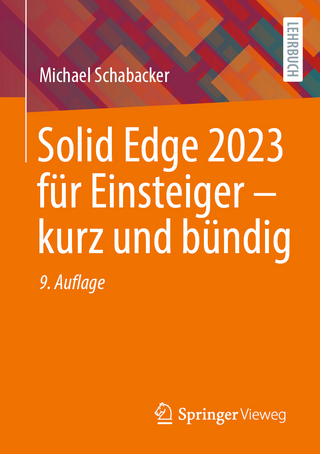
Bubble Wake Dynamics in Liquids and Liquid-Solid Suspensions
Butterworth-Heinemann Ltd (Verlag)
978-0-409-90286-0 (ISBN)
- Titel ist leider vergriffen;
keine Neuauflage - Artikel merken
This book is devoted to a fundamental understanding of the fluid dynamic nature of a bubble wake, more specifically the primary wake, in liquids and liquid-solid suspensions, an dto the role it plays in various important flow phenomena of multiphase systems. Examples of these phenomena are liquid/solids mixing, bubble coalescence and disintergration, particle entrainment to the freeboard, and bed contraction.
Preface1 Introduction 1.1 Physical Significance of Bubble Wake 1.2 Occurrence of Wake in General 1.3 Fluid Dynamics of Wake Flow 1.3A Vorticity Generation/Transport from Solid Surfaces 1.3B Vorticity Generation/Transport from Free Surfaces 1.3C Idealized Steady-State Flow Model References2 Single Bubble Rise Characteristics 2.1 Bubble Shape 2.1A Shape Regimes and General Behavior 2.IB Fluid Dynamic Factors Controlling the Bubble Shape 2.1C Effect of Physical Properties on the Bubble Shape 2.2 Bubble Rise Velocity 2.2A Effect of Wake on the Bubble Rise Velocity 2.2B General Correlations for Terminal Rise Velocity 2.3 Bubble Motion 2.3A Type of Bubble Motion 2.3B Onset of Oscillation in Bubble Motion 2.3C Frequency of Oscillation in Bubble Motion 2.3D Bubble Shape Fluctuations 2.4 Concluding Remarks References3 Wake Structure 3.1 Wake Nature and Geometry 3.1A Laminar Wakes 3.1B Turbulent Wakes 3.1C Unified Characteristics of Wakes 3.2 Two-Dimensional Wake Configurations 3.2A Wake behind Solid Cylinders 3.2B Wake behind Gas Bubbles 3.3 Three-Dimensional Wake Configurations 3.3A Wake behind Nongaseous Bodies 3.3B Wake behind Gas Bubbles 3.4 Concluding Remarks References4 Wake Instability—Formation and Shedding 4.1 Onset of Wake Instability 4.2 Mechanisms of Wake Formation and Shedding 4.2A Wake Evolution in Two-Dimensional Systems 4.2B Steady Shedding in Three-Dimensional Systems 4.3 Synchronization between Wake Shedding and Bubble Motion 4.3A Forced Oscillation of Solid Cylinders 4.3B Free Oscillation of Gas Bubbles 4.3C Oscillation of Bubble and its Wake as a Single Body 4.4 Vortex-Shedding Frequency 4.4A Single Bubbles—Effect of Solid Particles 4.4B Single Bubbles—Effect of Solids Properties and Holdup 4.4C Single Bubbles Immediately above the Surface of Liquid-Solid Fluidized Beds 4.4D Stream of Bubbles in Liquid-Solid Suspensions 4.5 Concluding Remarks References5 Wake Sizes 5.1 Definitions of Wake Boundaries 5.1A Primary-Wake Boundary 5.1B Confined Turbulent Wake Boundary 5.2 Dynamic Variations in Wake Sizes 5.2A Primary-Wake Size 5.2B Confined Turbulent Wake Size 5.3 Measurement of Time-Averaged Primary-Wake Size 5.3A Measurement in Liquids 5.3B Measurement in Liquid-Solid Suspensions 5.4 Prediction of Time-Averaged Primary-Wake Size 5.4A Steady Wake behind Small Bubbles at Low Reynolds Numbers 5.4B Unsteady Wake at Higher Reynolds Numbers 5.4C Model Predictions Compared with Experimental Measurements 5.5 Time-Averaged Confined Turbulent Wake Size 5.5A Measurement 5.5B Estimation 5.6 Concluding Remarks References6 Wake Solids Concentration 6.1 Localization of Dispersed Particles 6.1A Particle Trajectories and Concentration Gradient 6.1B Comparison with Uniformly Bubbling Two-Phase Flow 6.2 Local Solids Concentration Distributions 6.2 A Measurement Techniques 6.2B Measured Solids Holdup Distributions in Single-Bubble Systems 6.2C Measured Solids Holdup Distributions in Multi-Bubble Systems 6.3 Average Solids Concentration in Wake 6.3A Appropriate Wake Boundary for Averaging 6.3B Estimated Wake Solids Holdup 6.4 Concluding Remarks References7 Wake Flow and Pressure 7.1 Fluid Mechanic Parameters Useful in Describing Wake Flow 7.1A Flow Lines and their Relationships 7.1B Other Fluid Mechanic Parameters 7.2 Near-Wake Topology 7.2A Near Wake and Critical-Point Patterns 7.2B Vortex Shedding and Evolution of Critical Points 7.2C Topology Based on Other Variables 7.3 Mass and Momentum Transport via Vortical Motion 7.3A Mass Entrainment 7.3B Momentum Transport 7.4 Trajectories and Descent Rate of Vortex Center 7.4A Trajectories 7.4B Descent Velocity 7.5 Size and Shape of Vortex Core 7.5A Size Variation 7.5B Shape Deformation 7.6 Trajectories of Liquid Elements and Solid Particles 7.7 Velocity Profiles 7.8 Wake Pressure 7.8A Local Pressure Measurement around Bubbles 7.8B Theoretical Pressure Field in an Idealized Wake 7.9 Concluding Remarks References8 Wake Effects in Various Flow Systems 8.1 Bubble Coalescence and Breakup 8.1A Acceleration of Trailing Bubbles 8.1B Coalescence/Breakup Mechanisms due to Bubble and Wake Interactions 8.1C Breakup Mechanism due to Particle and Bubble-Wake Interactions 8.1D Wake Interference of Bubbles Rising Side by Side 8.2 Bed Contraction and Solids Mixing 8.3 Particle Entrainment in a Fluidized Bed 8.4 Wake Effects in Other Flow Systems 8.4A Heat Exchanger Tube Erosion 8.4B Viability of Suspended Cells 8.5 Concluding Remarks References9 Wake Effects on Mass (and Heat) Transfer and Chemical Reactions 9.1 Gas-Liquid Mass Transfer 9.1A Circular-Cap and Spherical-Cap Bubbles 9.1B Ellipsoidal Bubbles 9.1C Model Results 9.2 Liquid-Solid Mass Transfer 9.2A Mass Transfer from a Suspended Particle 9.2B Mass Transfer from a Stationary Particle 9.3 Heat Transfer 9.4 Chemical Reactions 9.4A Model Formulation 9.4B Model Results 9.5 Concluding RemarksReferencesAppendixNomenclatureAuthor IndexSubject Index
| Erscheint lt. Verlag | 31.10.1990 |
|---|---|
| Verlagsort | Oxford |
| Sprache | englisch |
| Themenwelt | Technik ► Maschinenbau |
| ISBN-10 | 0-409-90286-1 / 0409902861 |
| ISBN-13 | 978-0-409-90286-0 / 9780409902860 |
| Zustand | Neuware |
| Haben Sie eine Frage zum Produkt? |
aus dem Bereich


